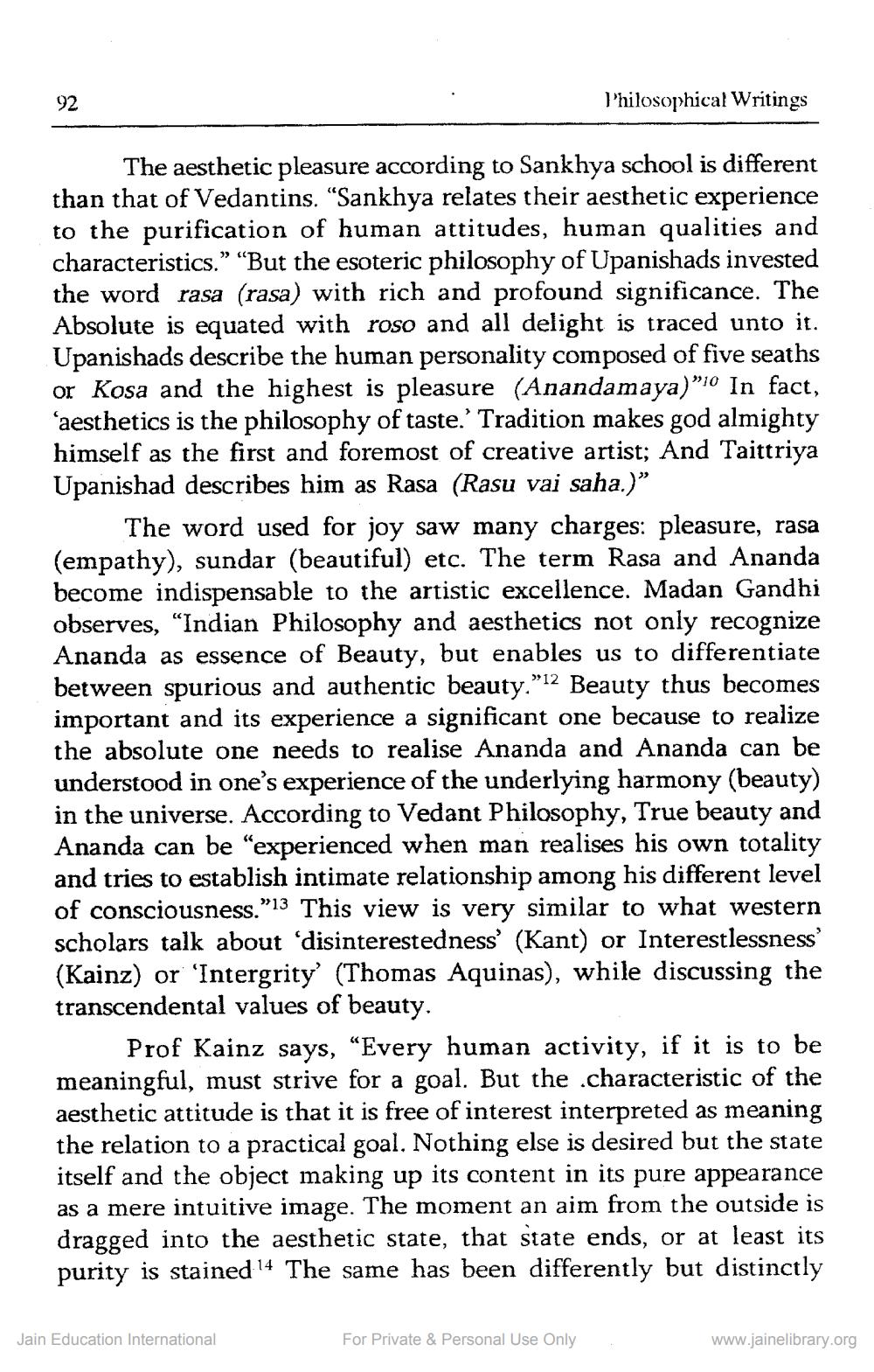________________
92
l'hilosophical Writings
The aesthetic pleasure according to Sankhya school is different than that of Vedantins. “Sankhya relates their aesthetic experience to the purification of human attitudes, human qualities and characteristics.” “But the esoteric philosophy of Upanishads invested the word rasa (rasa) with rich and profound significance. The Absolute is equated with roso and all delight is traced unto it. Upanishads describe the human personality composed of five seaths or Kosa and the highest is pleasure (Anandamaya)"10 In fact, ‘aesthetics is the philosophy of taste.' Tradition makes god almighty himself as the first and foremost of creative artist; And Taittriya Upanishad describes him as Rasa (Rasu vai saha.)”
The word used for joy saw many charges: pleasure, rasa (empathy), sundar (beautiful) etc. The term Rasa and Ananda become indispensable to the artistic excellence. Madan Gandhi observes, “Indian Philosophy and aesthetics not only recognize Ananda as essence of Beauty, but enables us to differentiate between spurious and authentic beauty."12 Beauty thus becomes important and its experience a significant one because to realize the absolute one needs to realise Ananda and Ananda can be understood in one's experience of the underlying harmony (beauty) in the universe. According to Vedant Philosophy, True beauty and Ananda can be "experienced when man realises his own totality and tries to establish intimate relationship among his different level of consciousness."13 This view is very similar to what western scholars talk about 'disinterestedness' (Kant) or Interestlessness' (Kainz) or 'Intergrity' (Thomas Aquinas), while discussing the transcendental values of beauty.
Prof Kainz says, “Every human activity, if it is to be meaningful, must strive for a goal. But the characteristic of the aesthetic attitude is that it is free of interest interpreted as meaning the relation to a practical goal. Nothing else is desired but the state itself and the object making up its content in its pure appearance as a mere intuitive image. The moment an aim from the outside is dragged into the aesthetic state, that state ends, or at least its purity is stained 14 The same has been differently but distinctly
Jain Education International
For Private & Personal Use Only
www.jainelibrary.org




